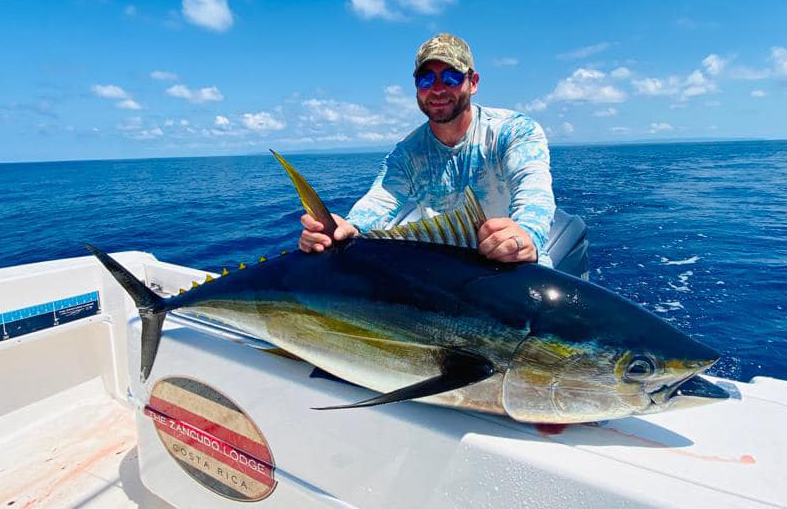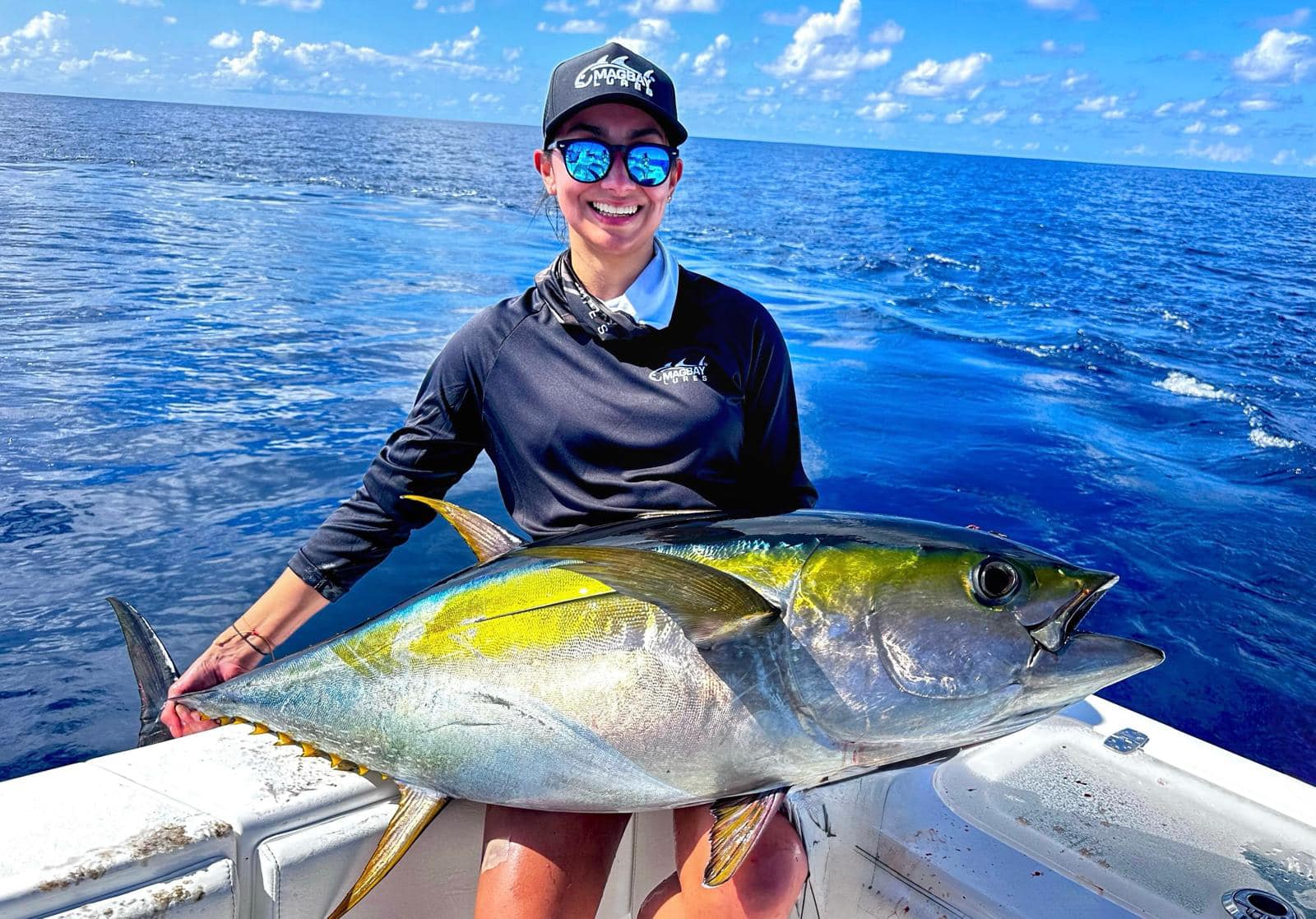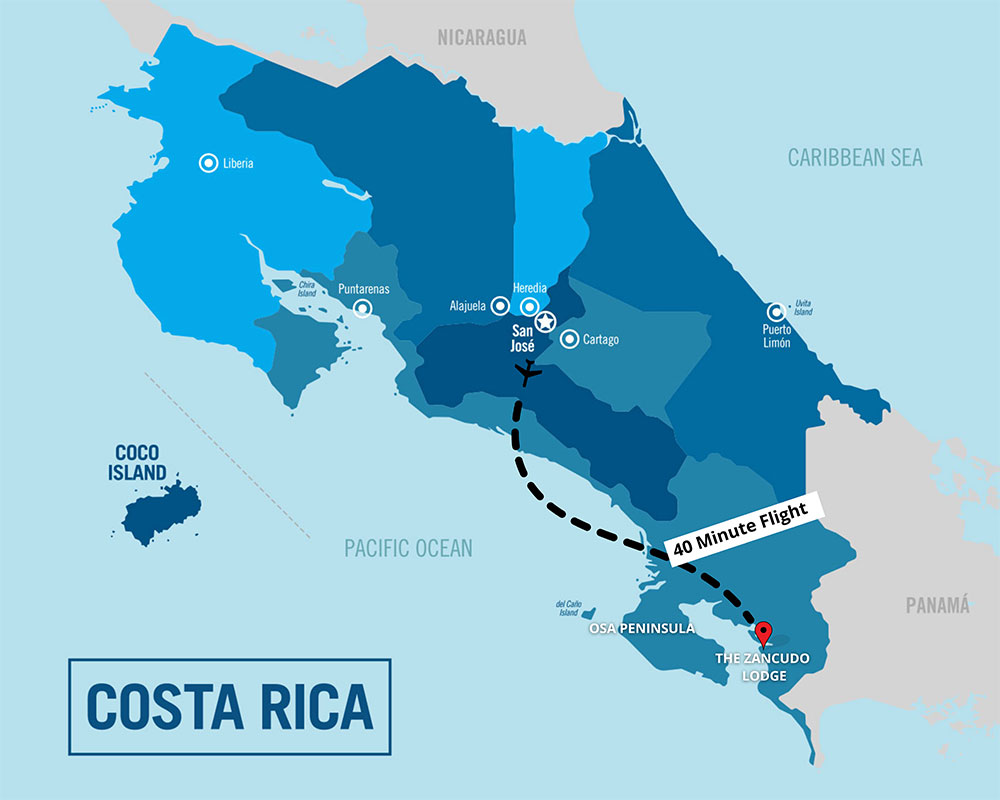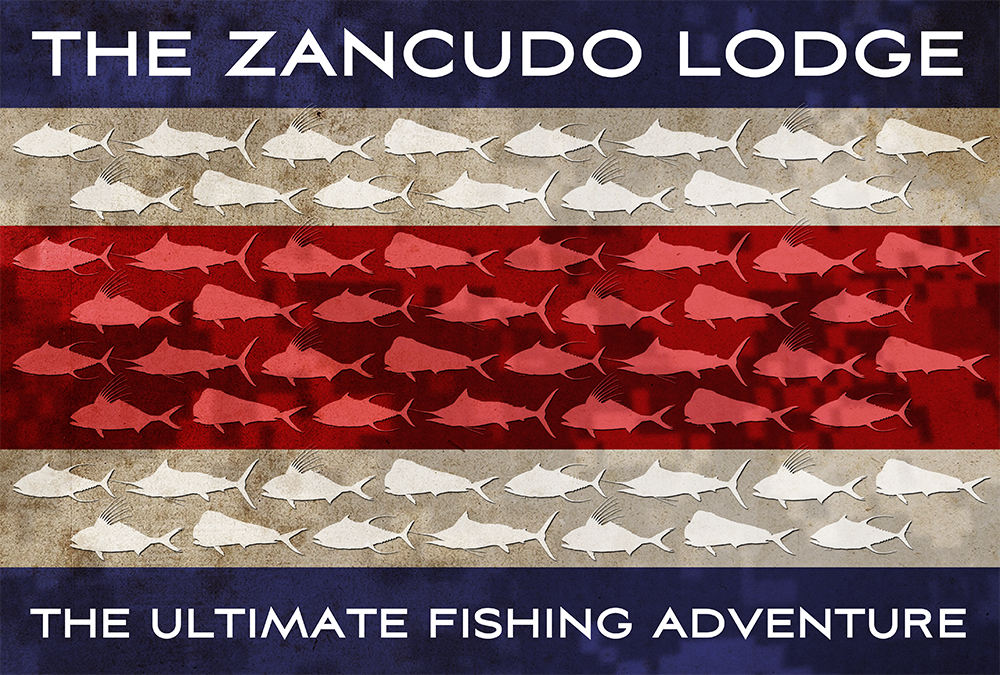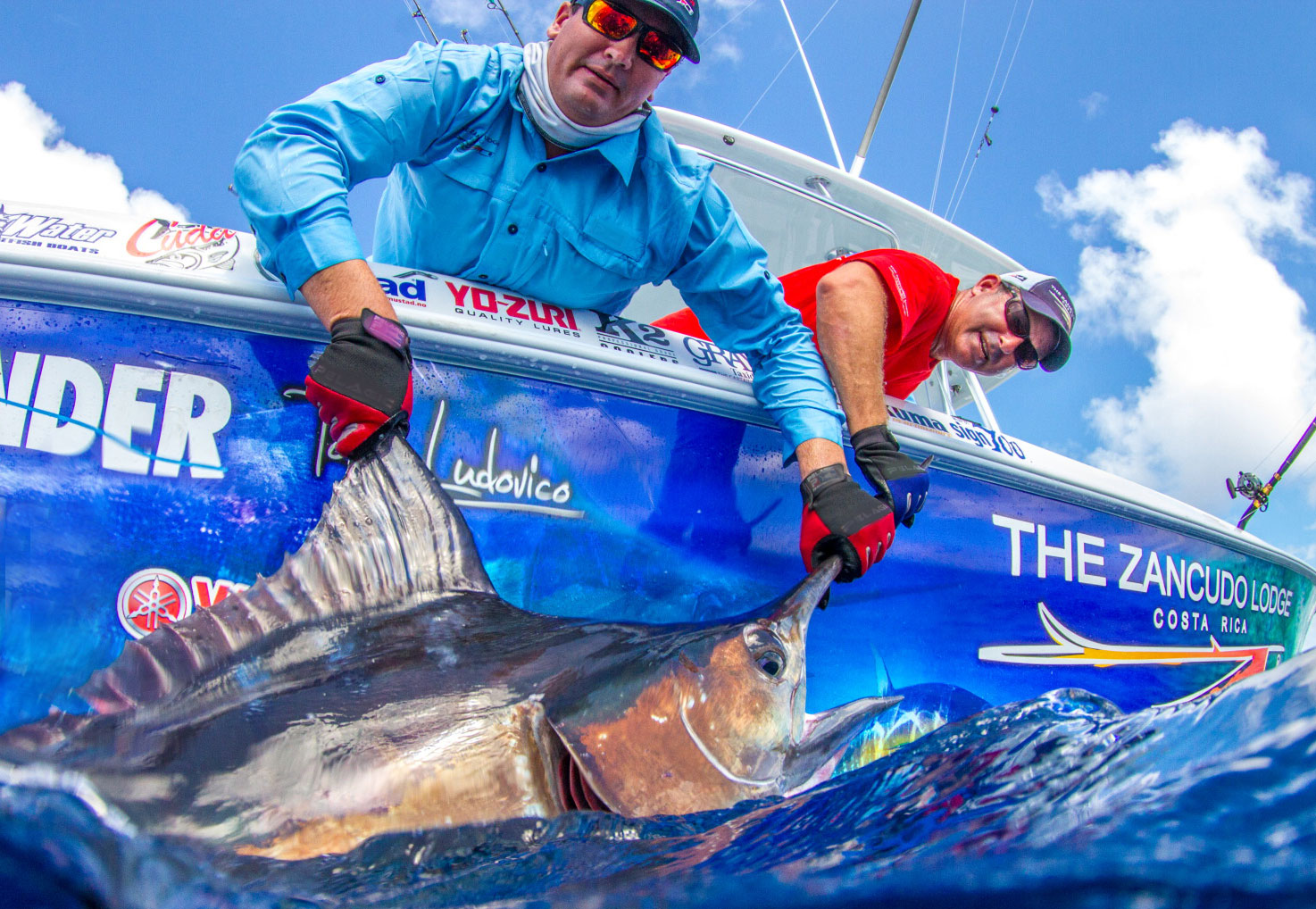
When to Catch Marlin in Costa Rica
Learn about When to Catch Marlin in Costa Rica
If you’re looking for the ultimate trophy during your fishing vacation in Costa Rica, look no further than the blue marlin
Marlin:The Holy Grail of Sport Fish
If you look at any angler’s bucket list, you’ll see one familiar name sitting at the top of every list. From Hollywood movies to Ernest Hemingway books, the iconic blue marlin has become the most recognizable symbol in all of sport fishing.
At The Zancudo Lodge in Southern Costa Rica, you can find blue, black and striped marlin year round. Blue marlin, like sailfish, are pelagic and move with currents in search of warm tropical and subtropical waters to feed and mate and because of this, they peak at different times of the year. With female blue marlin living to be 27 years and reaching weights of over 1,000 lbs – “The Lady in Blue” puts up the ultimate fight and only a lucky few anglers are able to experience this thrill and share a first hand account of this intense dance between angler and fish.
Here is a quick video highlighting the thrill of marlin fishing in Costa Rica
Where and When to Catch Marlin in costa rica
In Southern Costa Rica where we’re located, blue marlin can be found year round peaking in December through March. Unlike sailfish, targeting marlin is all about the thrill of the hunt. Over the last couple seasons, we have seen some very good marlin fishing with two boats reaching double digit releases in our final month of operation for the season (read that fishing report here). Our lodge record is currently 16 marlin releases in one day but we invite you to come and try to to do even better. There is only one thing we can think of more exciting than a marlin hookup…and that’s a “double” marlin hookup (see photo below) with two marlins hitting the teasers at the same time. This is really a rush as captains and anglers scramble to get the baits pitched and hook set. Imagine sharing this incredible experience with your best friend or spouse on Costa Rica’s South Pacific coast!
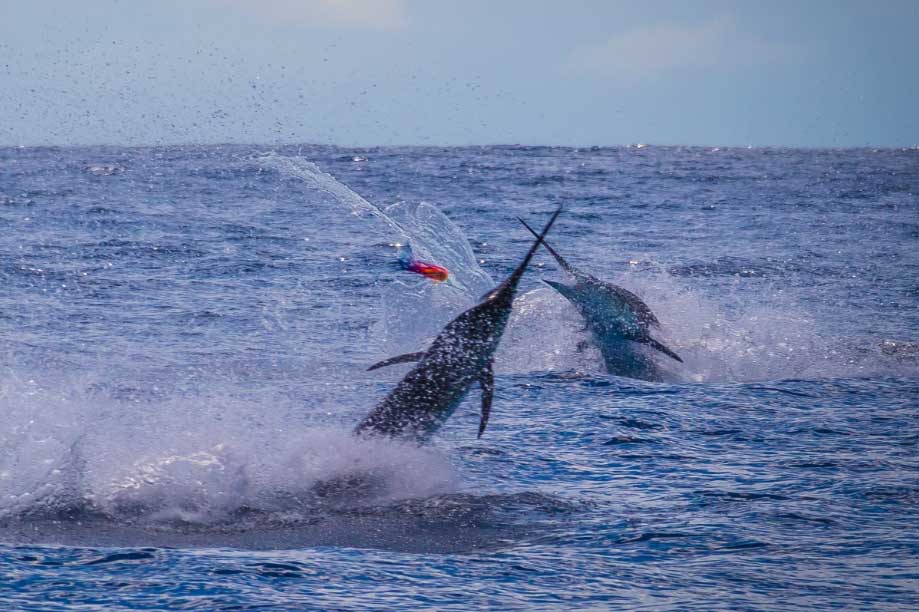
Pictured above a “double marlin” hookup out of The Zancudo Lodge, Costa RicaOur geographical position in Southern Costa Rica puts us right at the intersection of three famous tectonic plates making the offshore waters around The Zancudo Lodge a great place to hunt blue marlin. The fish here get very big but not giant, with individuals averaging 250 to 350 lbs and some much bigger individuals being released annually. Last year we had multiple releases of 500+ lb marlin including some blacks as well, but temper your expectations to get the most enjoyment out of your marlin fishing trip in Costa Rica. Your patience will usually be rewarded. When the seamounts or FADs (Fish Aggregating Devices) are active, they can offer fertile grounds for pursuing multiple marlin on any given day.
Pioneering FAD fishing in Southern Costa Rica

Our region of Costa Rica, just next to the Panama border, is one of the few places on Earth where 3 tectonic plates intersect. Over a vast amount of time this phenomenon has caused intense crust upwellings and volcanic activity which continues today. From the Hannibal Bank to the Cocos Ridge off Golfito, and for a hundred miles offshore, natural underwater pinnacles, seamounts and underwater volcanoes help create the natural habitats marlin love. As this structure lays on a 500 to 1000 fathom bottom and intersects the prevailing Chilean current, it causes upwellings that form natural FAD’s (Fish Attracting Devices) that concentrate bait fish which in turn attract the yellowfin tuna and bonito. These natural structures create also the ideal location to place artificial FADS.
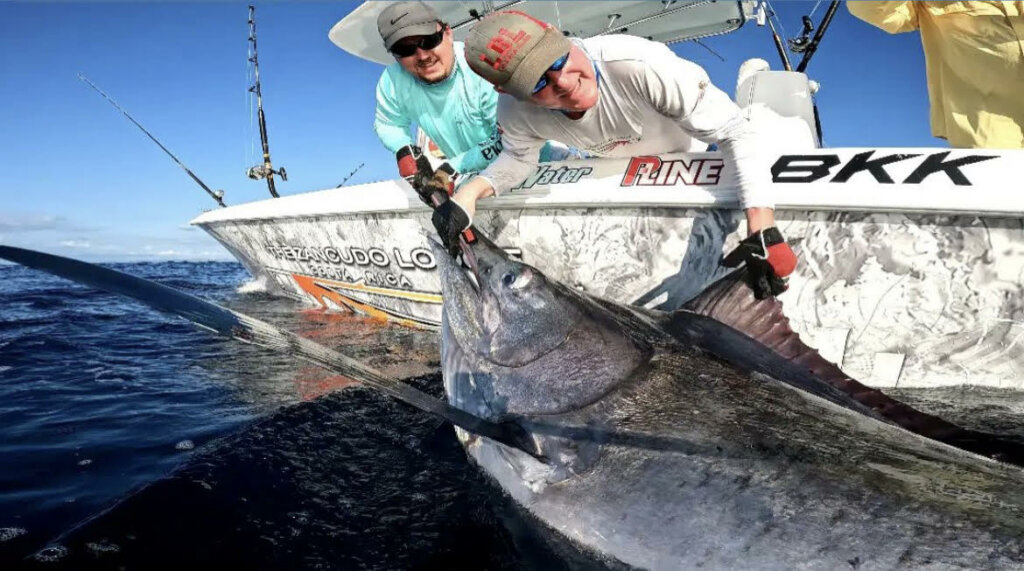
Just like their name seems to indicate, FAD fishing has been a major trend in the last several years with several boats up and down the Pacific coast doing overnight trips to get to them. Because of our location, we can get you to the FADs and back in one day and have been one of the first operations in the country making visits to these seamounts regularly.
What are FADS?
FADS, or “Fish Aggregating Devices” also called Seamounts, are man made buoys or similar structures tethered to rising pinnacle formations on the Ocean’s floor. When activated these structures create a haven for small fish with mini food chains being created. And as with all food chains, the large apex fish are not far behind, in this case marlin, seeking out a tasty tuna, bonito or dorado for lunch. When fully active, a day at the FADS can be non-stop action and catching 10 or more individuals in a day not uncommon. Given the nature of the fads, they are not always active or productive, so when you arrive for your offshore trip, you will be given the option to visit them if they are producing. We charge a small extra fuel charge for those wishing to visit the FADS but when they are productive, it is well worth the extra trip.
Here is a video of cleaning and activating the FADS in Southern Costa Rica
Quick Blue Marlin Facts
- Females are 3 to 4 times larger than males.
- Larger specimens can reach 14 feet in length and weight of almost 2000 pounds.
- On average, blue marlin usually reaches 11 feet in length and between 200 and 400 pounds in weight
- Dorsal (back) side of blue marlin is dark blue while the belly is silver white in color.
- Blue marlin has elongated body, long tail, pronounced dorsal fin and sharp, spear-shaped upper jaw.
- Blue marlin uses its spear-shaped jaw to stun, corral and catch food. It feeds on crustaceans, fish (mackerel, tuna), dorado and squids.
- Blue marlin has 24 vertebrae which allow fast movement through the water. It reaches the speed of 60 miles per hour.
- Blue marlin relies on the eye sight to find food. It hunts during the day (diurnal animal).
- Females are able to spawn 4 times per single mating season, releasing up to 7 million eggs. Only small percentage of released eggs (less than 1%) will survive until the adulthood.
- Majority of eggs will be eaten by other marine creatures.
- Current Pacific World Record:1,376 – Females can reportedly grow to 1,998lbs
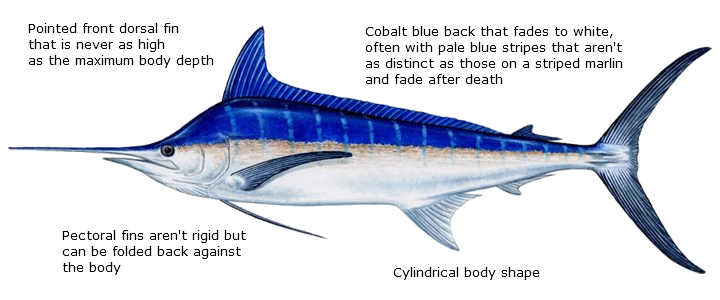
conservation: Marlin on the Rebound in Costa Rica
Marlin have been making a comeback in Costa Rica since 2014 when groups like FECOP pressured the government to push commercial tuna fishing (purse seine) boats further offshore. Since that time the marlin population had rebounded dramatically. In prior years, the commercial tuna boats were catching up to 20 tons of marlin per year as incidental bycatch greatly reducing the number of individuals available for sport fishing. This year the Costa Rica government has passed a new law pushing the commercial tuna fleet to 80 miles offshore (read more about this ) which should make the marlin bite even better! Using circle hooks is required by law when fishing for billfish to minimize the impact on the fish. We also require all billfish be released and photos taken of the fish in the water…not on the boat.



